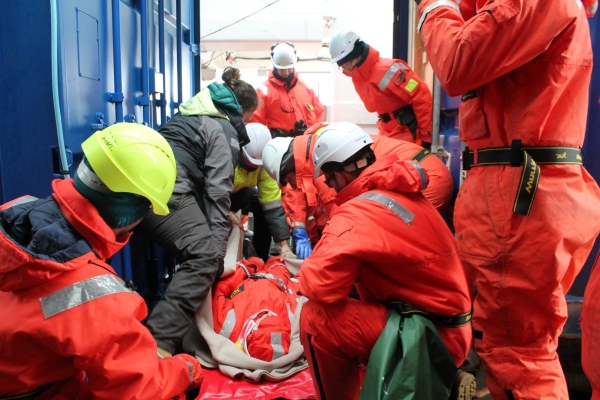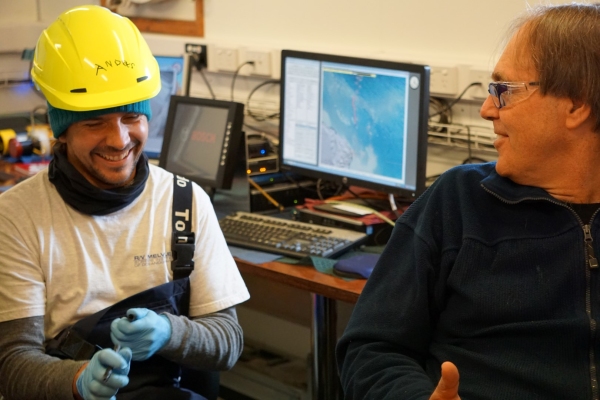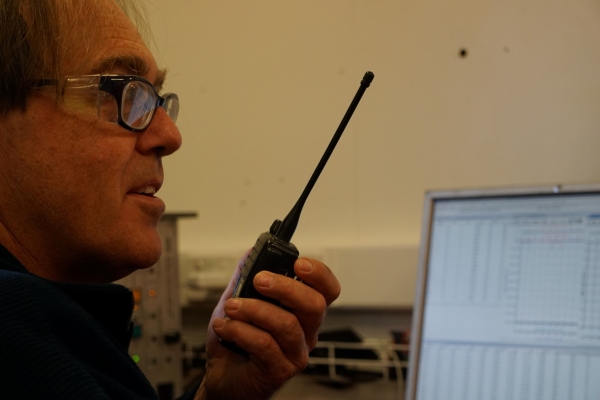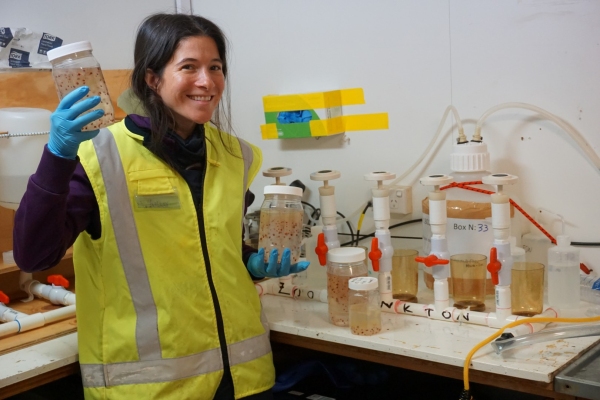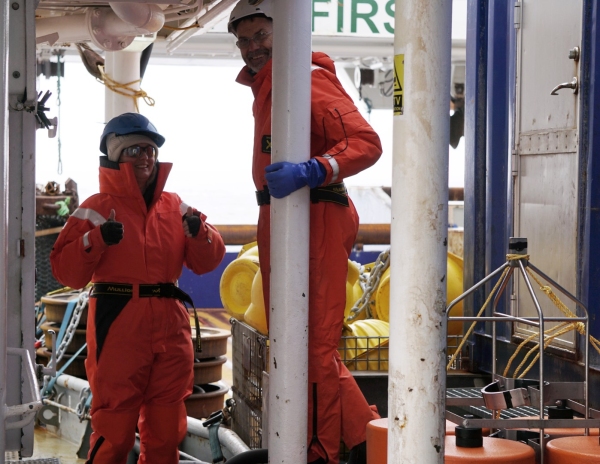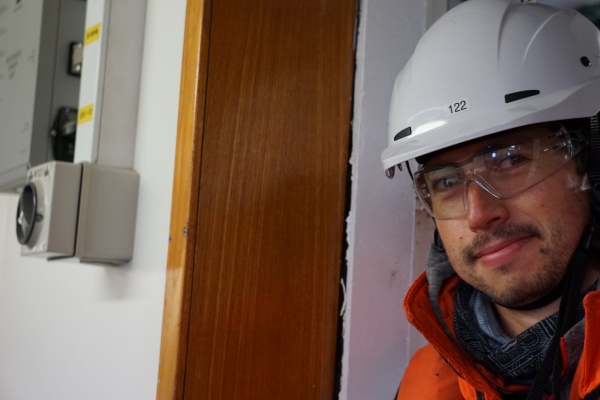16 February 2018
We are getting to the end of our transit south, which means today was the last of our daily emergency drills. Our task was to find the injured persons (with simulated injuries only of course!) on deck, assess their state, and transport them to the ship’s hospital. This exercise demanded extreme communication and coordination. We worked in teams to assess the status of the injured person (including body parts affected, level of consciousness and exposure to cold) and provide immediate comfort. The drill ended with a coordinated transport of the immobilized patient on a stretcher, through narrow corridors and obstacles on the deck, to the bed in the hospital. We learned a lot about teamwork and refreshed our knowledge of DRS ABCs (assess Danger, assess Responsiveness, Send for help, clear Airways, check Breathing, check Circulation).
On the science front, we did our last CTD and Bongo sampling of the transit, as we prepare for tomorrow when we will begin the main objectives of the voyage. The CTD control room in our hydro-drylab is a busy place during the cast, as scientists observe the information transmitted back to the ship, which includes temperature, salinity and fluorescence – a proxy for phytoplankton biomass. Some measurements are typically done at consistent depths (e.g. dissolved oxygen and salinity), and others are varied according to the sensor profiles, as the phytoplankton community changes in vertical structure depending on conditions such as light, nutrients and grazing. The computer monitors with the real-time information provide the basis to decide on the depths of water collection for biological sampling and experiments.
The Bongo tow following the CTD cast showed a contrasting zooplankton community to the one we sampled yesterday, completely dominated by salps! Very few other critters were present (a few krill, copepods and an amphipod), as under certain oceanographic conditions salps seem to outcompete all other zooplankton taxa.
Finally, as we prepare to begin our work within the Ross Sea proper, other groups are preparing for their sampling. The benthic crew is ensuring their cameras, epibenthic sled, sorting container and set-up is ready to go!

